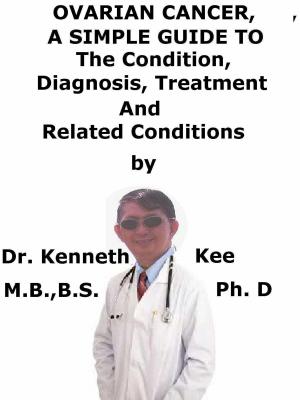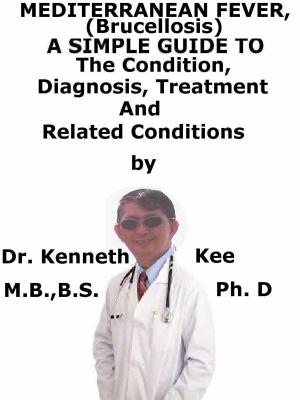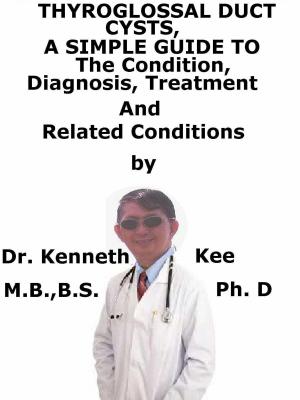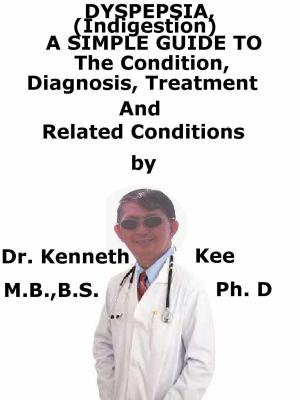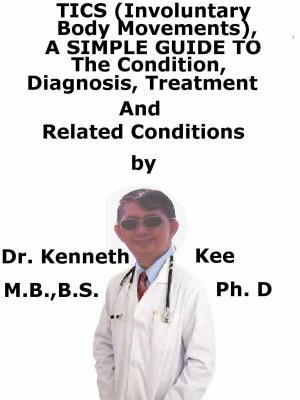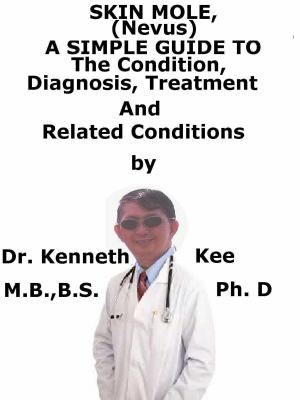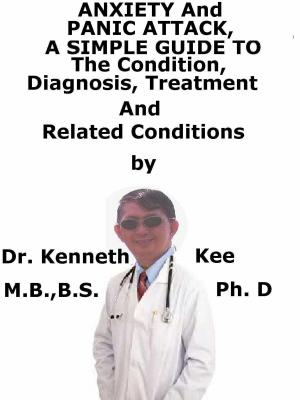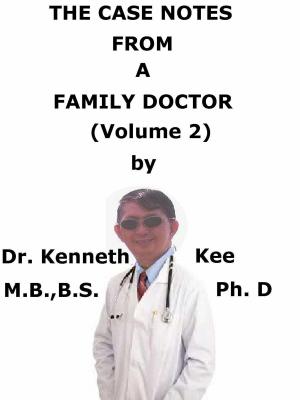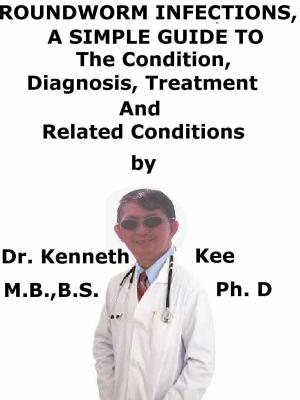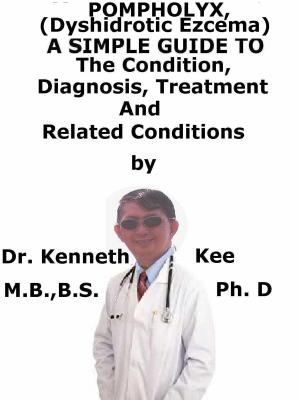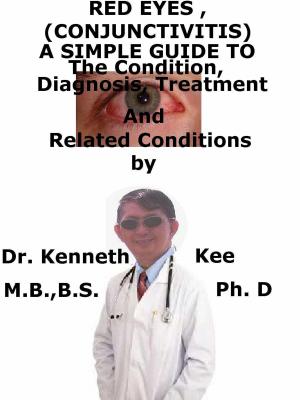Pulmonary Fibrosis, (Lung Scarring) A Simple Guide To The Condition, Diagnosis, Treatment And Related Conditions
Nonfiction, Health & Well Being, Health, Ailments & Diseases, Respiratory| Author: | Kenneth Kee | ISBN: | 9781370353262 |
| Publisher: | Kenneth Kee | Publication: | December 29, 2017 |
| Imprint: | Smashwords Edition | Language: | English |
| Author: | Kenneth Kee |
| ISBN: | 9781370353262 |
| Publisher: | Kenneth Kee |
| Publication: | December 29, 2017 |
| Imprint: | Smashwords Edition |
| Language: | English |
This book describes Pulmonary Fibrosis, Diagnosis and Treatment and Related Diseases
“Singapore scientists have found that a protein, Interleukin 11, or IL11, causes fibrosis disease, which can lead to life-threatening conditions.
The discovery paves the way for more effective treatment against fibrosis, where the body produces excessive connective tissue in response to an injury, causing tissue scarring.
When this happens in vital organs such as the heart, kidney or lungs, it not only damages the organ, but could result in organ failure, leading to death.
Fibrotic diseases represent a major cause of illness and death around the world.
The discovery that IL11 is a critical fibrotic factor represents a breakthrough for the field and for drug development.
So if people have advanced fibrosis, that can be turned back and the organ can become healthy again.
There is a precedent that that can work, particularly in the liver, heart, lung and kidney."
Fibrosis:
The disorder fibrosis is the formation of fibrous connective tissue as a repairing response to injury or injury.
Fibrosis may refer to the connective tissue deposition that occurs as part of normal healing or to the excess tissue deposition that occurs as a pathological process.
When fibrosis occurs in reaction to damage, the word “scarring” is used.
Some of the main types of fibrosis that occur in the body are:
- Pulmonary fibrosis
- Liver cirrhosis
- Cardiac fibrosis
- Kidney fibrosis
Pulmonary fibrosis
Pulmonary fibrosis is the scarring or thickening of the lungs without a known cause.
Pulmonary fibrosis is a group of diseases which cause interstitial lung damage and eventually fibrosis and loss of the elasticity of the lungs.
It is a chronic disorder characterized by shortness of breath, diffuse infiltrates on CXR and inflammation and fibrosis on biopsy.
There are 3 types of lung fibrosis:
1.Replacement fibrosis due to lung damage - e.g., infarction, tuberculosis and pneumonia.
2.Focal fibrosis due to response to irritants - e.g., coal dust and silica.
3.Diffuse parenchymal lung disease (DPLD), which happens in pulmonary fibrosis (PF) and extrinsic allergic alveolitis
Risk factors
1.Smoking - if there is a smoking history of >20 pack years.
2.The disorder is frequent in certain occupations – such as silica, asbestos, heavy metals or mouldy foliage.
3.Environmental factors are pigeon breeding and contaminated ventilation systems.
4.Chronic viral infections particularly hepatitis C and Epstein-Barr viruses.
5.Gastro-esophageal reflux disorder
Causes
The cause and pathogenesis of PF is not known
Symptoms
When the patient has PF, the lungs become scarred and fibrotic.
This makes it difficult for the patient to breathe
Symptoms:
1.Chest pain
2.Cough (normally dry)
3.Not as active
4.Shortness of breath
Signs:
1.Fine bilateral inspiratory crackles
2.Clubbing of the fingers (25-50%)
3.Normal spirometry or impaired spirometry
4.Pulmonary hypertension: loud P2 of the second heart sound, a fixed split S2, a holosystolic tricuspid regurgitation murmur, ankle edema
Diagnosis
The diagnosis of pulmonary fibrosis should be thought of in any patient with breathlessness
Chest x-ray may show evidence of fibrosis changes
Chest CT scan
Performing CT scans of the thorax (including high-resolution images - HRCT) may reveal pattern of usual interstitial pneumonia
Treatment
There is no known cure for PF.
Treatment is aimed at relieving symptoms and slowing disease progression:
Other treatment are:
1.Encourage tobacco users to quit
2.Prescribe oxygen therapy
Surgery
Lung transplant (best treatment)
Medicine
Anti-fibrotic agents (pirfenidone)
Tyrosine kinase inhibitors (nintedanib)
TABLE OF CONTENT
Introduction
Chapter 1 Pulmonary Fibrosis
Chapter 2 Causes
Chapter 3 Symptoms
Chapter 4 Diagnosis
Chapter 5 Treatment
Chapter 6 Prognosis
Chapter 7 Fibrocystic Breast Condition
Chapter 8 Liver Cirrhosis
Epilogue
This book describes Pulmonary Fibrosis, Diagnosis and Treatment and Related Diseases
“Singapore scientists have found that a protein, Interleukin 11, or IL11, causes fibrosis disease, which can lead to life-threatening conditions.
The discovery paves the way for more effective treatment against fibrosis, where the body produces excessive connective tissue in response to an injury, causing tissue scarring.
When this happens in vital organs such as the heart, kidney or lungs, it not only damages the organ, but could result in organ failure, leading to death.
Fibrotic diseases represent a major cause of illness and death around the world.
The discovery that IL11 is a critical fibrotic factor represents a breakthrough for the field and for drug development.
So if people have advanced fibrosis, that can be turned back and the organ can become healthy again.
There is a precedent that that can work, particularly in the liver, heart, lung and kidney."
Fibrosis:
The disorder fibrosis is the formation of fibrous connective tissue as a repairing response to injury or injury.
Fibrosis may refer to the connective tissue deposition that occurs as part of normal healing or to the excess tissue deposition that occurs as a pathological process.
When fibrosis occurs in reaction to damage, the word “scarring” is used.
Some of the main types of fibrosis that occur in the body are:
- Pulmonary fibrosis
- Liver cirrhosis
- Cardiac fibrosis
- Kidney fibrosis
Pulmonary fibrosis
Pulmonary fibrosis is the scarring or thickening of the lungs without a known cause.
Pulmonary fibrosis is a group of diseases which cause interstitial lung damage and eventually fibrosis and loss of the elasticity of the lungs.
It is a chronic disorder characterized by shortness of breath, diffuse infiltrates on CXR and inflammation and fibrosis on biopsy.
There are 3 types of lung fibrosis:
1.Replacement fibrosis due to lung damage - e.g., infarction, tuberculosis and pneumonia.
2.Focal fibrosis due to response to irritants - e.g., coal dust and silica.
3.Diffuse parenchymal lung disease (DPLD), which happens in pulmonary fibrosis (PF) and extrinsic allergic alveolitis
Risk factors
1.Smoking - if there is a smoking history of >20 pack years.
2.The disorder is frequent in certain occupations – such as silica, asbestos, heavy metals or mouldy foliage.
3.Environmental factors are pigeon breeding and contaminated ventilation systems.
4.Chronic viral infections particularly hepatitis C and Epstein-Barr viruses.
5.Gastro-esophageal reflux disorder
Causes
The cause and pathogenesis of PF is not known
Symptoms
When the patient has PF, the lungs become scarred and fibrotic.
This makes it difficult for the patient to breathe
Symptoms:
1.Chest pain
2.Cough (normally dry)
3.Not as active
4.Shortness of breath
Signs:
1.Fine bilateral inspiratory crackles
2.Clubbing of the fingers (25-50%)
3.Normal spirometry or impaired spirometry
4.Pulmonary hypertension: loud P2 of the second heart sound, a fixed split S2, a holosystolic tricuspid regurgitation murmur, ankle edema
Diagnosis
The diagnosis of pulmonary fibrosis should be thought of in any patient with breathlessness
Chest x-ray may show evidence of fibrosis changes
Chest CT scan
Performing CT scans of the thorax (including high-resolution images - HRCT) may reveal pattern of usual interstitial pneumonia
Treatment
There is no known cure for PF.
Treatment is aimed at relieving symptoms and slowing disease progression:
Other treatment are:
1.Encourage tobacco users to quit
2.Prescribe oxygen therapy
Surgery
Lung transplant (best treatment)
Medicine
Anti-fibrotic agents (pirfenidone)
Tyrosine kinase inhibitors (nintedanib)
TABLE OF CONTENT
Introduction
Chapter 1 Pulmonary Fibrosis
Chapter 2 Causes
Chapter 3 Symptoms
Chapter 4 Diagnosis
Chapter 5 Treatment
Chapter 6 Prognosis
Chapter 7 Fibrocystic Breast Condition
Chapter 8 Liver Cirrhosis
Epilogue

